Blog Content
10
Oct
2025
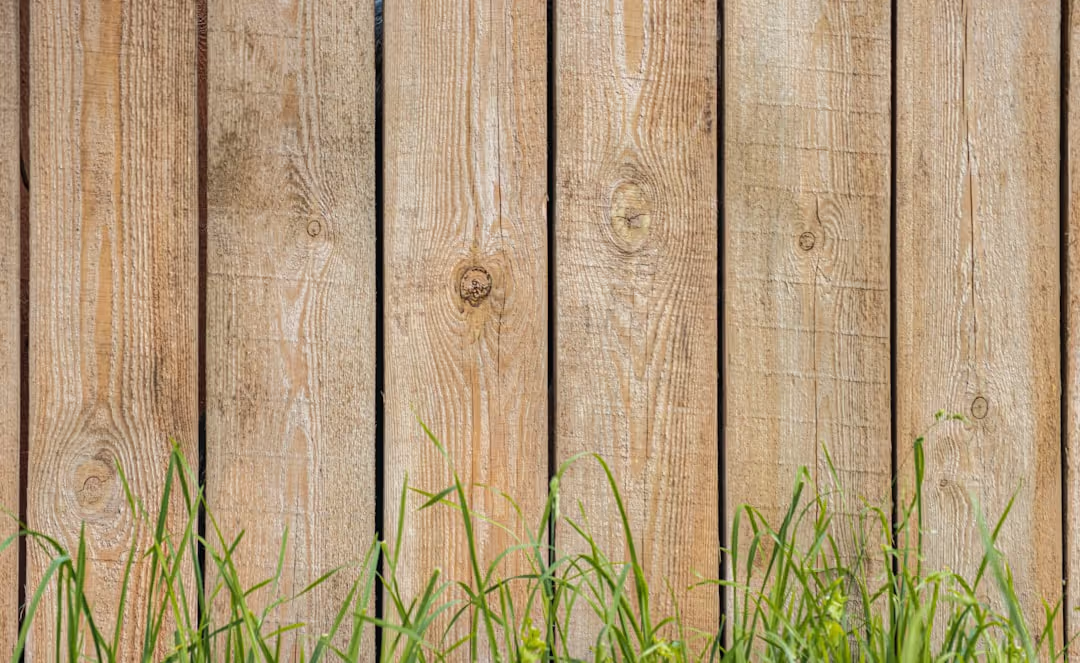
Replacing wood fence panels is often the most cost-effective solution when more than 20-30% of your fence shows signs of damage. Whether you're dealing with rotted boards, warping, or storm damage, knowing when and how to replace panels can save you thousands compared to full fence replacement.
Quick Answer: When to Replace Wood Fence Panels
Your fence is more than just a boundary - it's your first line of defense for security and a major factor in your home's curb appeal. A damaged fence not only looks unsightly but can actually decrease your property value and compromise your family's safety.
The good news? Professional fence companies can often replace individual panels rather than entire sections, making this a surprisingly affordable home improvement. With the right approach, you can restore your fence's strength and beauty without the massive expense of starting from scratch.
Professional wood fence installation ensures your new panels are properly aligned, securely fastened, and built to last decades rather than years.
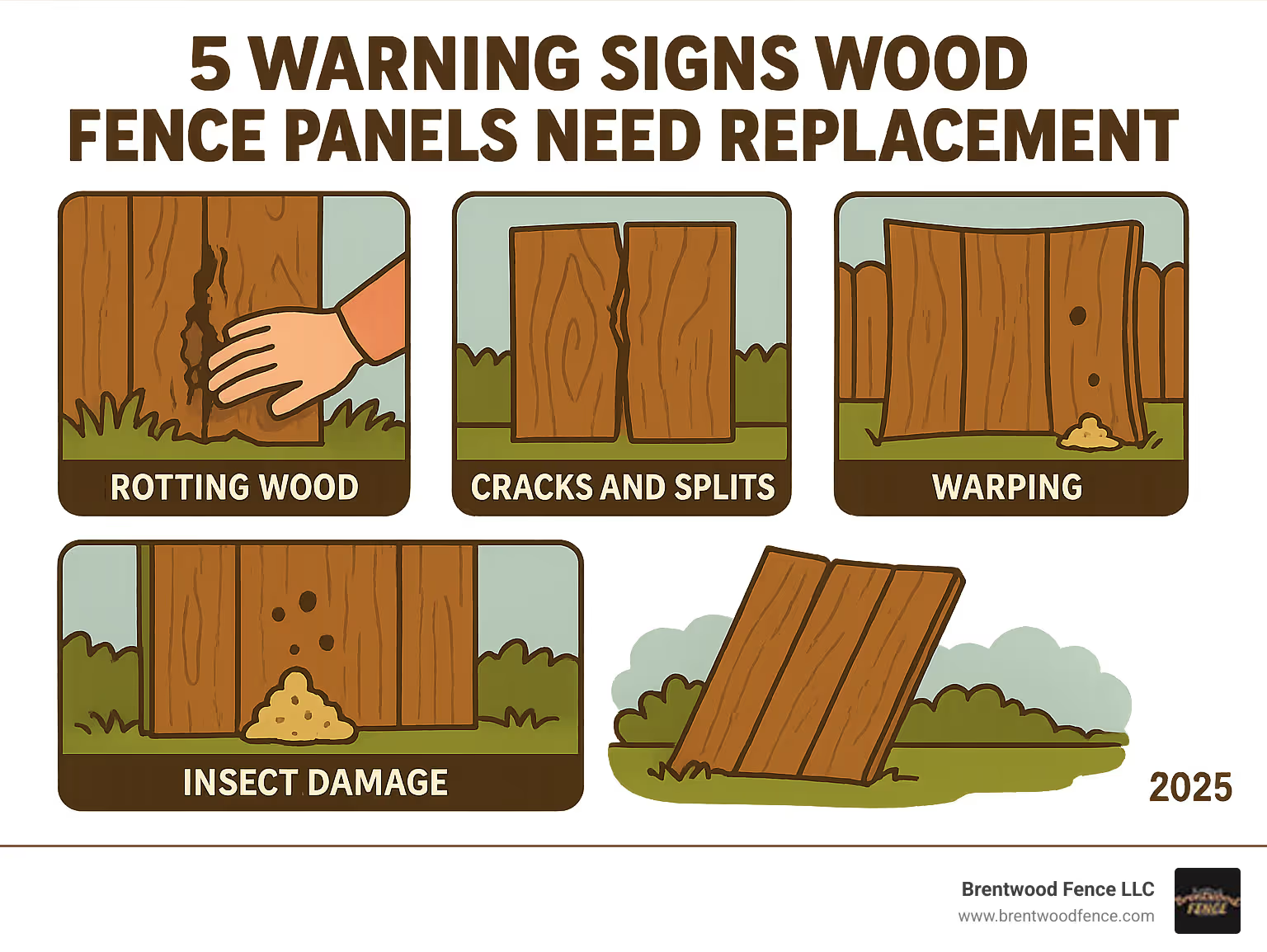
Replacing wood fence panels helpful reading:
When your fence starts showing signs of wear, you're faced with an important decision: should you patch things up or invest in something more permanent? It's a bit like deciding whether to keep nursing an old car along or finally bite the bullet and get a replacement.
The answer lies in a thorough assessment of your fence's condition. A professional inspection goes far beyond just eyeballing the obvious problems. We'll examine each panel for discoloration, splintering, and warping, while also testing how solid your posts really are.
One of our go-to tools? A simple screwdriver. We'll gently poke at suspicious areas of wood. If it gives way easily or crumbles like a stale cookie, that's your fence telling you it's ready to retire. This kind of rot often runs deeper than what you can see on the surface.
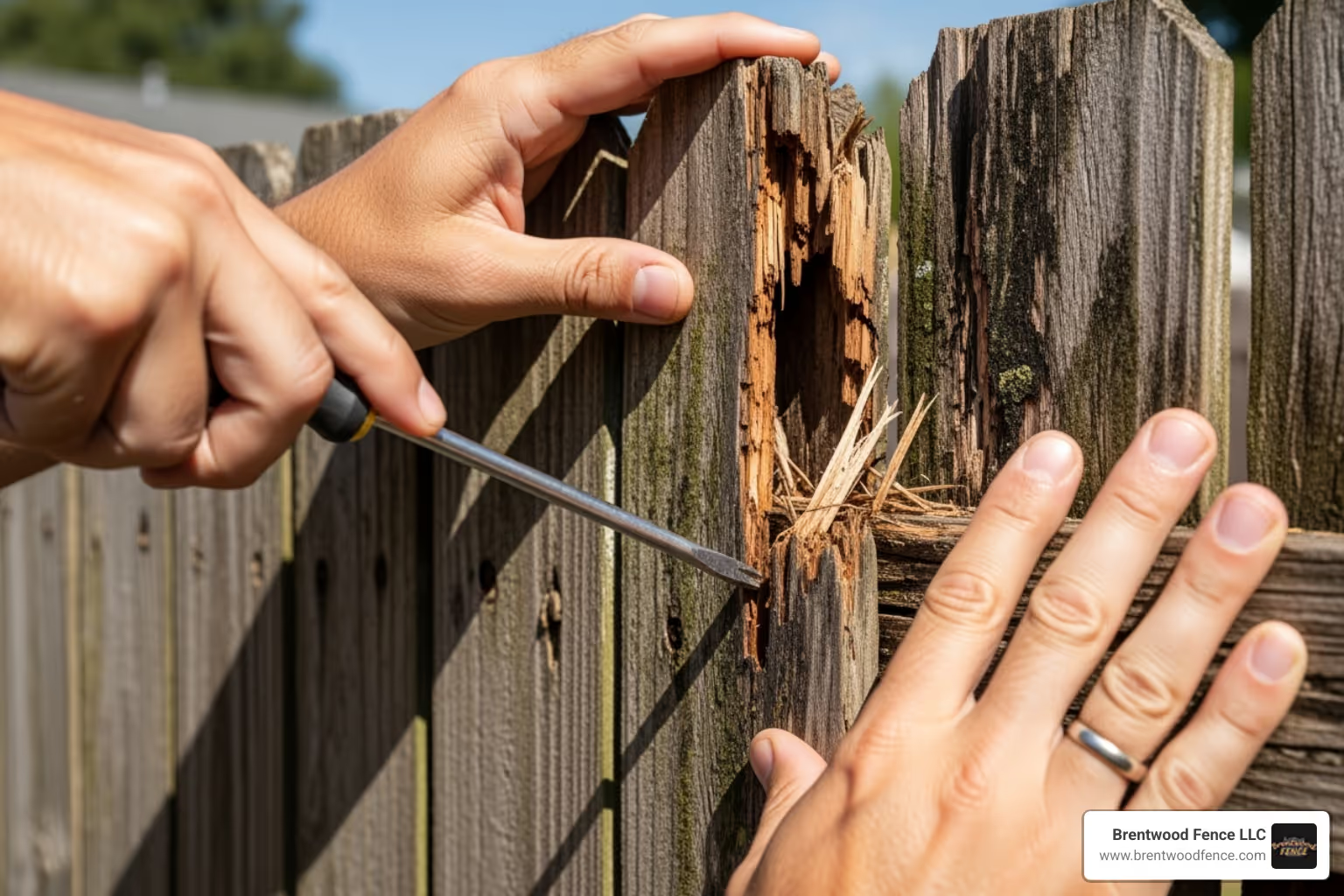
Here's where the 20-30% damage rule comes in handy. When more than a quarter of your fence shows significant damage, replacing wood fence panels typically makes more financial sense than trying to repair everything piece by piece. Think of it this way - you wouldn't keep patching a roof that's mostly holes.
While repairs might seem like the budget-friendly choice upfront, they can actually cost you more in the long run if the damage is widespread. Our goal is always to give you a solution that lasts, not just a quick band-aid fix.
If you're dealing with minor issues, our fence repair services might be exactly what you need.
Sometimes a fence has simply reached the end of its road. After years of battling New England's harsh winters, summer storms, and everything in between, some damage just can't be undone. Here's what tells us it's time to say goodbye:
Severe rot and crumbling wood is the biggest red flag. When wood becomes soft and mushy, or literally falls apart at your touch, the structural integrity is completely compromised. There's no coming back from that level of decay.
Widespread insect damage shows up as tiny, perfectly round holes or tunnels throughout the wood. You might also notice sawdust-like debris called frass around the base of your fence. Termites and carpenter ants don't just damage wood - they turn it into their personal highway system.
Large fractures and splits can't be glued back together like a broken vase. These cracks indicate the wood has lost its ability to handle stress, and failure is imminent. Leaning posts or an unstable structure usually means the foundation itself has failed, either from rotting at ground level or concrete footings that have given up the ghost.
When you spot these issues, repairs become a losing battle. Our experienced fence repair company team can assess the full extent of damage and give you an honest evaluation.
Replacing wood fence panels becomes the smart choice when several factors align. Extensive damage - that 20-30% rule we mentioned - makes replacement more cost-effective than endless repairs. You'll spend less money and get better results.
Fence age plays a huge role too. Even the best-maintained cedar fence typically lasts 15-30 years, while pine and spruce have shorter lifespans without proper treatment. When your fence is getting up there in years, replacement gives you a fresh start with modern materials and techniques.
Are you finding yourself on a first-name basis with your fence repair guy? Frequent repairs are a clear sign that your fence has entered its final chapter. Instead of throwing good money after bad, replacement stops this expensive cycle.
Safety concerns should never be ignored. A wobbly, leaning fence poses real risks to children, pets, and property. Long-term value makes replacement an investment in your home's security, curb appeal, and market value.
Selecting the right wood fence panels for your property is one of those decisions that can make or break your home's curb appeal. We've helped countless homeowners in New Hampshire, Massachusetts, and Maine find the perfect balance between beauty and functionality, and we know how overwhelming the choices can seem at first.
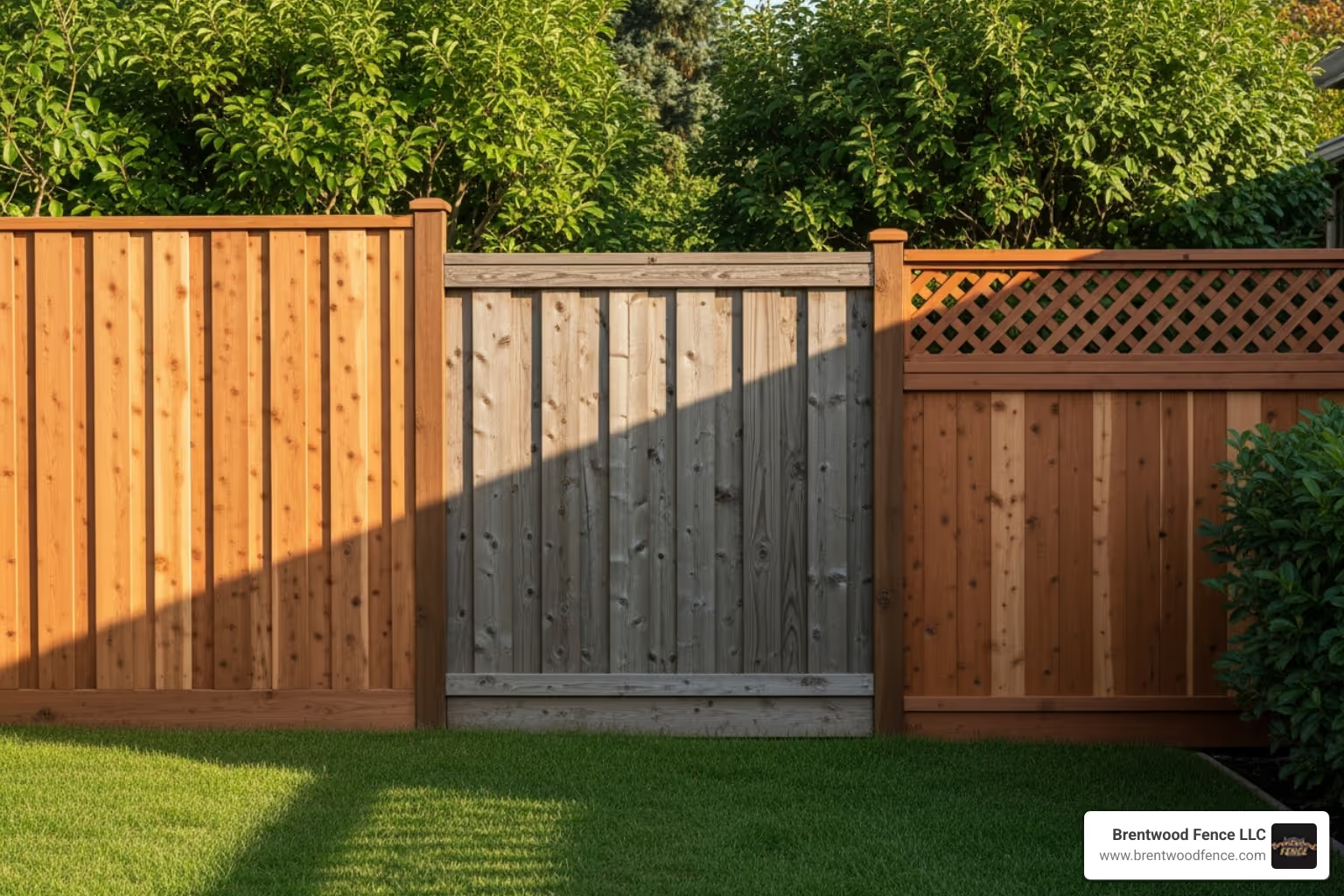
When we're replacing wood fence panels, we always start by understanding what you're trying to achieve. Are you looking for complete privacy to enjoy your morning coffee in peace? Or maybe you want something that defines your property lines while still feeling neighborly?
Privacy fences with their tall, solid panels are our go-to recommendation for homeowners who want maximum seclusion and security. They're perfect for creating that backyard oasis where you can truly unwind. On the flip side, spaced picket fences offer a more open feel while still clearly marking your boundaries - they're especially charming for front yards where you want to maintain that welcoming neighborhood vibe.
If you're drawn to something with a bit more visual interest, board-on-board fences provide excellent privacy while creating a lovely textured appearance. The overlapping boards stay tight even as the wood naturally shrinks and expands with our New England seasons. Shadowbox fences take this concept further, alternating boards on either side of the rails for a dimensional look that offers privacy from most angles while still allowing airflow.
For those who want the best of both worlds, lattice top fences combine solid privacy panels with decorative lattice sections on top. They're particularly beautiful when homeowners use them as a backdrop for climbing roses or clematis.
The wood species you choose makes a huge difference in both appearance and longevity. Cedar is hands-down our most popular choice, and for good reason. This beautiful wood naturally resists rot, decay, and insects - which is incredibly valuable in our region's varied climate. Left untreated, cedar weathers to a stunning silvery-grey that many homeowners absolutely love.
Pine offers an excellent middle ground for budget-conscious homeowners who still want quality. It's readily available and works beautifully with stains and paints, giving you plenty of customization options. Spruce is another cost-effective choice that takes paint and stain exceptionally well, making it perfect if you're planning to coordinate your fence color with your home's exterior.
For more detailed information on the types of wood privacy fences we offer, we've put together some helpful resources that dive deeper into each option.
The details matter when it comes to fence longevity and visual appeal. We've seen too many beautiful fences fail prematurely because corners were cut on treatment or framing - and that's something we never want our clients to experience.
Pressure-treated wood is one of the smartest investments you can make for your fence. The chemical treatment process creates incredible resistance to rot, decay, and insect damage. We often tell clients that pressure-treated panels can come with a 15-year guarantee, which speaks volumes about their durability against our sometimes harsh New England weather.
If you have a specific vision for your fence color, unfinished panels give you complete creative control. They're like a blank canvas, ready for whatever custom stain or paint color will perfectly complement your home and landscape. We've seen homeowners create absolutely stunning results with this approach.
Framed panels are something we recommend whenever possible because they provide extra structural strength and create that polished, professional appearance that really sets a fence apart. The framing helps panels withstand wind and weather much better than unframed alternatives.
When it comes to top shapes, you have some great options to consider. Flat top panels offer a clean, modern look that works beautifully with contemporary home styles. Dog-eared panels, where the top corners of each picket are cut at an angle, create a classic, softened appearance that's been popular for generations.
Here's something important we always discuss with clients: when we're replacing wood fence panels, our goal is to match your existing fence as closely as possible. Nobody wants their property to look like a patchwork quilt! If needed, we can stain or paint the entire fence once the new panels are installed to ensure perfect color consistency. This attention to detail is what makes the difference between a fence repair that looks obvious and one that appears seamless and professionally done.
When your fence panels need professional attention, you deserve a process that's efficient, thorough, and respectful of your property. At Brentwood Fence LLC, we've refined our approach to replacing wood fence panels over countless projects, and we're proud of the seamless experience we provide homeowners throughout New Hampshire, Massachusetts, and Maine.
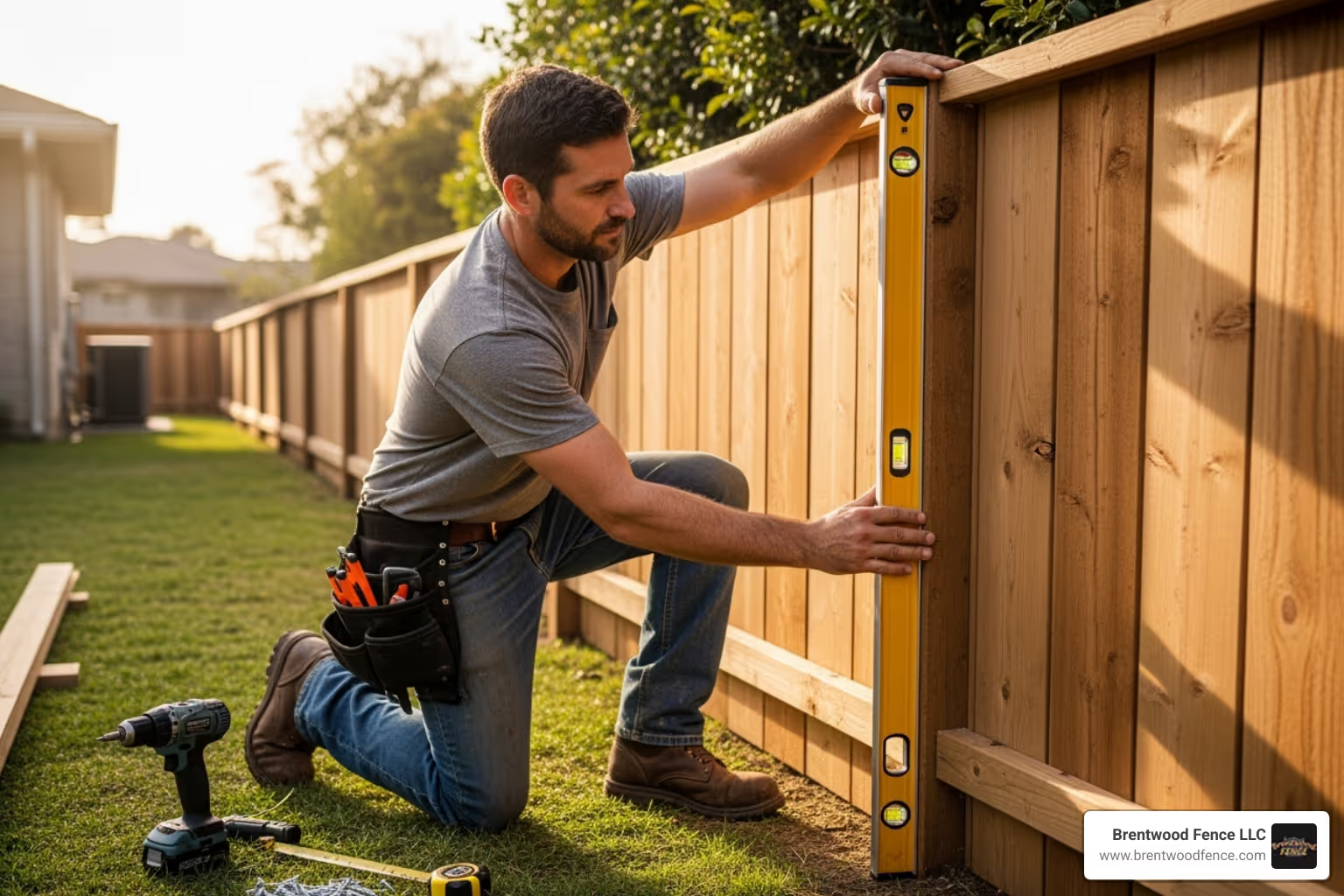
Before we even touch your fence, we take time to prepare the work area properly. This means carefully moving any garden decorations, solar lights, mulch, or irrigation equipment away from the fence line. We've learned that this simple step prevents accidental damage and gives our team the clean workspace they need to do their best work.
Safety comes first on every job site. Our crew arrives equipped with proper safety gear including protective eyewear and work gloves. We use professional-grade tools designed specifically for fence work, which not only makes the job more efficient but also protects your existing fence structure during the replacement process.
Removing the old panels requires a careful touch. Our installers use specialized pry bars to gently separate damaged panels from the rails, taking care to preserve any salvageable hardware. If we find that fence posts are compromised during this inspection, we address those issues immediately. After all, there's no point installing beautiful new panels on unstable posts.
Speaking of posts, we've created a helpful resource that shows exactly how we handle post repairs and replacements. Check out this great video showing you how our team replaces a single post to see our attention to detail in action.
Precision makes all the difference when replacing wood fence panels. Each opening between posts gets measured individually because even small variations can affect how your new panels fit. While most panels come in standard 8-foot lengths, we never assume - we always measure twice and cut once, as the old saying goes.
Once we've selected the perfect replacement panels, the real craftsmanship begins. Our installers position each panel carefully, using exterior-grade fasteners that resist rust and corrosion. We often start by tacking panels in place with a cordless brad nailer, which allows us to make fine adjustments before final securing.
The difference between a professional installation and a DIY attempt often comes down to one tool: the level. Our crew uses 4-foot levels to ensure every panel sits perfectly straight and plumb. We check multiple points along each panel because even the slightest deviation can create a wavy appearance that's impossible to ignore once you notice it.
Stability is non-negotiable in our work. Each panel receives proper reinforcement through strategic placement of screws and finishing nails. This prevents the wobbling or shifting that can occur with rushed installations. For homeowners with metal posts, we have specialized techniques outlined in our guide on installing wood fence panels with metal posts.
A professional fence installation doesn't end when the last panel is secured. We believe in completing the entire picture, which includes those important finishing touches that protect your investment and improve your property's appearance.
Post caps are more than decorative elements - they're essential protection for your fence posts. By covering the end grain of each post, caps prevent water, frost, and UV damage from shortening your fence's lifespan. We also ensure all trim boards are properly aligned and secured, creating that polished look that distinguishes professional work.
Your new panels will benefit from proper finishing, and we're happy to discuss your options. Pressure-treated wood offers built-in protection, but adding a quality stain or sealant every few years provides an extra layer of defense against our region's challenging weather. Stain tends to be more breathable and highlights the wood's natural beauty, while paint offers maximum protection and unlimited color options.
Maintenance doesn't have to be complicated. We recommend simple annual inspections where you look for loose boards, damaged hardware, or areas where debris has accumulated. A gentle cleaning with soap and water keeps your fence looking fresh, and sealing any small cracks prevents them from becoming bigger problems.
The goal is maximizing your fence's lifespan while keeping maintenance manageable. With proper care, your professionally installed panels can provide decades of reliable service, protecting your property and enhancing your home's curb appeal for years to come.
Let's be honest – watching a YouTube video about replacing wood fence panels might make it look straightforward, but the reality is quite different. What seems like a weekend project can quickly turn into weeks of frustration, multiple trips to the hardware store, and results that leave you wishing you'd called the professionals from the start.
The time commitment alone is substantial. A professional crew can typically replace several panels in a day, while a DIY approach might stretch across multiple weekends. Then there's the matter of tools – you'll need everything from heavy-duty pry bars to specialized post-hole diggers, professional-grade levels, and exterior-grade fasteners. Most homeowners don't have these tools lying around, and renting or buying them can quickly eat into any cost savings.
But here's where it gets tricky: skill level matters tremendously when you're dealing with structural components. Assessing whether a post needs reinforcement, ensuring panels are perfectly plumb, and selecting the right fasteners for New England weather conditions – these aren't skills you pick up overnight. We've seen plenty of well-intentioned DIY attempts that resulted in wobbly fences, misaligned panels, or worse, safety hazards.
Avoiding potential mistakes is perhaps the biggest advantage of professional installation. Improper post setting can lead to leaning sections within months. Using the wrong screws or nails can cause panels to pull away during the first strong wind. Misaligned panels create gaps that defeat the purpose of privacy fencing entirely.
Our professional efficiency means your fence gets done right the first time. We bring decades of experience to every project, along with the proper tools and safety equipment. More importantly, we offer a workmanship warranty that protects your investment. If something goes wrong due to our installation, we'll make it right – that's peace of mind you simply can't get with DIY.
When you factor in the cost comparison, professional installation often makes financial sense. Yes, the upfront cost is higher than buying materials yourself, but you avoid the expense of mistakes, tool rentals, and the inevitable "oops, I need to start over" moments that can double your material costs.
As your trusted local fence builder serving communities across New Hampshire, Massachusetts, and Maine, we've perfected our process through thousands of installations. We know how to handle everything from rocky New England soil to unexpected underground utilities. Most importantly, we get the job done efficiently so you can get back to enjoying your beautifully restored fence rather than nursing sore muscles and wounded pride.
When homeowners are considering replacing wood fence panels, we hear the same thoughtful questions time and time again. It's completely natural to want to understand the process, costs, and best practices before making this important investment in your property. Let me share some insights from our years of experience helping families across New Hampshire, Massachusetts, and Maine restore their fences.
A leaning fence post is one of those issues that keeps homeowners up at night - and rightfully so. When a post starts to lean, it's not just an eyesore; it's compromising the stability of your entire fence section.
The first step is always a thorough professional assessment. Sometimes what looks like a disaster from your kitchen window might actually be a manageable repair. If the post is only slightly leaning and the wood itself is still solid, we might be able to save it through reinforcement with concrete. This involves carefully digging around the base, bracing the post back to perfectly plumb, and adding fresh concrete to lock it in place.
However, when posts are severely rotted at the base or leaning dramatically, full post replacement becomes necessary for long-term stability. This is actually more involved than many homeowners realize - we need to break up the old concrete footing, dig below the frost line (crucial in our New England climate), and properly set a new post with fresh concrete. It's definitely not a weekend DIY project, but the peace of mind you'll have with a rock-solid foundation is worth every penny.
This is such a great question, and the answer might surprise you. Your new wood fence panels should absolutely not touch the ground, even though it might seem logical to extend them all the way down for maximum privacy.
Here's the thing about wood and moisture - they're not friends for the long haul. When wood sits directly on soil, it acts like a sponge, constantly absorbing moisture from the ground. This creates the perfect environment for rot, decay, and even insect problems. We follow the professional standard of maintaining at least a 2-inch gap between your fence panels and the ground.
This small detail makes a huge difference in preventing future rot and extends your fence's lifespan significantly. The gap allows air to circulate freely underneath, keeping the wood dry and healthy. In areas where you need that extra bit of coverage near the ground, we can install gravel boards as a barrier that's designed to handle ground contact better than your main fence panels.
Ah, the million-dollar question - or hopefully not quite that much! The honest answer is that material costs, labor rates, and project scope all play important roles in determining your final investment.
Material costs vary depending on your choices. Cedar panels will cost more upfront than pine, but they'll also last longer with less maintenance. Pressure-treated options add to the initial expense but provide excellent protection against our sometimes harsh New England weather.
Labor rates reflect the skill and expertise required to do the job right. While you might see material costs for a few panels and think "this should only cost a couple hundred bucks," professional installation brings specialized tools, years of experience, and the assurance that your new panels will be perfectly aligned and securely fastened.
Project scope makes the biggest difference in your total cost. Replacing just two or three panels is quite different from replacing an entire fence section, especially if posts need attention too. Regional price differences also come into play - materials and labor costs can fluctuate based on local market conditions throughout New Hampshire, Massachusetts, and Maine.
The best approach? Get a detailed, personalized quote for your specific situation. For comprehensive information about pricing in our service areas, check out our guide on the cost of wood fence installation. We believe in transparent pricing and will walk you through exactly what your investment includes.
When you stand back and look at a fence with fresh, professionally installed panels next to weathered, damaged sections, the difference is truly remarkable. Replacing wood fence panels transforms more than just your property's appearance – it restores that sense of pride you feel when you pull into your driveway.
The journey from damaged fence to beautiful barrier doesn't have to be overwhelming. Whether you're dealing with rotted boards that crumble at the touch, warped panels that no longer align, or storm damage that's left your fence looking defeated, professional replacement offers a path forward that makes financial sense.
The beauty of panel replacement lies in its precision. Rather than tearing down an entire fence system, we can strategically replace only what's damaged while preserving the solid foundation you already have. This approach delivers improved security for your family, improved curb appeal that neighbors notice, and a smart long-term investment that adds real value to your property.
At Brentwood Fence LLC, we've seen how the right wood species, proper installation techniques, and attention to finishing details create fences that don't just look great on day one – they continue performing beautifully through New England's challenging seasons. Our commitment to professional quality means your new panels will be perfectly aligned, securely fastened, and built to withstand whatever Mother Nature sends your way.
Your home deserves a fence that works as hard as you do. Don't let damaged panels compromise your property's security or drag down its appearance any longer.
Ready to see what professional replacing wood fence panels can do for your home? Get a quote for your wood fencing installation services and let's restore your fence to something you'll be proud of for decades to come.
Copyright 2022 Brentwood Fence | All Rights Reserved | Sitemap | Website by Plumb Development a Digital Marketing Agency